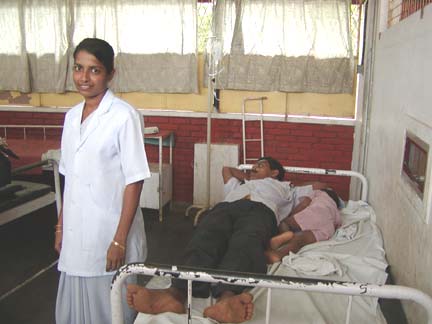
A research project funded by the John D. and Catherine T. MacArthur Foundation, Collaborative Research Grants, in the Program on Global Security and Sustainability. The collaborating institutions are the Kerala Health Studies and Research Centre, an NGO; and Montclair State University. MacArthur Grant Number: #99-61670-GSS. Please do not cite without permission from the authors. For permission, contact Richard W. Franke, Professor of Anthropology, Montclair State University, Upper Montclair, New Jersey 07043, email: franker@mail.montclair.edu. For further information in Kerala, contact Dr. Joy Elamon, Director, Kerala Health Studies and Research Centre, AN-318 Adarsh Nagar, Pattom Palace P. O., Thiruvananthapuram 695 004, Kerala, India. Email: khsrc@sancharnet.i |
Kerala Health and Decentralization Project
Case Study: Thrikkakara Co-operative Hospital
Background and Location
Though only five kilometers east of the city of Kochi, also called Ernakulam, Kerala’s most urbanized area, Thrikkakara has not yet lost its rural scenery of river, hills and paddy fields. Recently the panchayat became a suburban development area of the city of Kochi. The headquarters of Ernakulam district are located in this part of Edappally Block Panchayat. With land prices lower than in Kochi, a number of entrepreneurs started businesses here. The Indian Navy’s oceanographic laboratory, the national Indian Akashavani radio network, and the central government’s public television, Doordarshan are located here. The state government’s Kerala Industrial Infrastructure Development Corporation (KINFRA)’s industrial park, the only export zone in Kerala, and a number of other institutions came up here. Besides the headquarters and government servants’ quarters with about 500 families, new quarters for the Public Works Department have also been constructed. About 100 housing complexes and flats came into existence in this place where land prices are lower than in Kochi city. In short, the population here almost doubled in decade from 1990 to 2000.

Despite the presence of central and state government infrastructure and employees, health facilities in Thrikkakara were surprisingly underdeveloped. In 1999 the population of this village panchayat of 28.1 sq km was calculated as 75,000 on the basis of the renewed voters list and on the basis of new houses. The official census was held in 1991 and the population of Thrikkakara village panchayat at that time was 51,166. Yet, there were only two government primary health centres and a few clinics in the private sector in 1996. For any treatment beyond the primary level, people had to depend on the two surrounding urban areas. The private sector speciality hospitals in Kochi were very expensive and therefore inaccessible to common people.
Why the People’s Campaign Became Important
The high cost of specialized private medicine had convinced many local people that they would never have access to affordable health care above the PHC. But in 1996 the People’s Campaign aroused hopes for a co-operative hospital. This demand came up in the first village assembly of 1996 when people gathered to discuss the development problems of the panchayat. The first proposal was to establish a co-operative hospital as part of the Edappally Block Panchayat. But a lack of interest by the UDF block panchayat leaders prevented the project from materializing. Problems also developed because of a dispute about the location of the hospital. Edappally Block has an area of 50.97 sq km and includes three panchayats: Thrikkakara, Cheranallore (with 21,407 persons), and Kadamakkudy (with 14,668) in 1991.

For a year nothing more happened. But in drawing up the second annual plan under the People’s Campaign for 1998–99, the panchayat’s health action committee included the construction of a co-operative hospital as a people’s demand. In the first annual plan of 1997–98, money had been allotted for improving the functioning of the Primary Health Centre in Thrikkakara Village Panchayat. Even though peoples plan activists worked hard the expected result was not realized. At that time the village panchayat was governed by the UDF and the president was the late Mr. P.B.Kunjumuhammed (popularly known as Maina) of the congress party. The panchayat administration set up had just been changed by a no-confidence motion and the late Mr. P. B. Kunjumuhammad (popularly known as Maina) was elected as the president of the panchayat. (In the 2000 elections the LDF came to power in Thrikkakkara grama panchayat under the president ship of E. M. Hassainar of CPM). The proposal was discussed in detail in 100 neighborhood groups and then in all village assemblies. By the stage of the second year’s development seminar, a clear consensus had formed in support of the project. The village panchayat provided a Rs 50,000 grant. Planners expected those joining as members of the hospital co-operative society to contribute Rs 20 lakhs (two million rupees) as share capital. Another Rs 10 lakhs (one million) was anticipated as government purchases of share capital. The ownership of the hospital would thus be 2/3 held by the members and 1/3 by various levels of government. Government regulation of such cooperatives is restricted to control of certain financial transactions and a requirement of an annual audit; otherwise the elected director board is empowered to make policy decisions. After approval by the block level expert committee and the district planning committee, the project began on November1 1998.
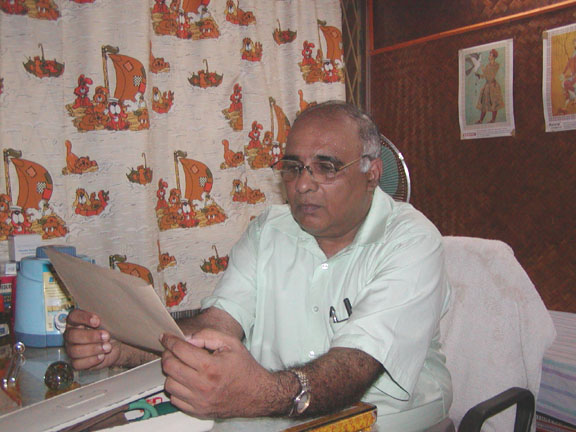
Organizing the Project
About 100 people participated in the first panchayat level meeting. They included members of the panchayat council, leaders of the political parties and mass organizations, representatives of voluntary associations and the association of traders and industrialists, and medical doctors. The meeting approved a set of proposed byelaws for the hospital. A fee of Rs 250 was fixed for full membership and Rs 100 for associate membership. Associate members have no rights to vote or run for the board of directors, or to vote on amending the bylaws. The board of directors is elected for a period of 5 years. The functioning area of the hospital society would be Thrikkakara village panchayat .A nine-member promotion committee was formed with representatives of all major sections of the community. This committee consisted of four members of the village panchayat including the president, vice-president and opposition leader of the panchayat, the chief doctor of the District Hospital, two people’s planning workers, a representative of the Traders and Industrialists’ Association and a health activist. In the committee, there were members belonging to both the ruling and the opposition parties. The chief promoter was a people’s planning activist.
The promotion committee submitted an application with the required documentation to the joint Registrar of the co-operative department. The application was accepted for enrolling 100 members. However, 1,221 people applied for membership and were accepted. People submitted over Rs 3 lakhs (Rs 300,000) in membership fees. The funds were deposited in the District Co-operative Bank. In March 1999 The Thrikkakara Grama Panchayat Co-operative Hospital Ltd. No. E 993 was registered as a Co-operative society under the Kerala Co-operative Societies Act 21 0f 1969, a general act that regulates cooperatives. In April 1999 the first general members meeting approved the byelaws. The promotion committee was entrusted to follow up and manage the day-to-day activities of the hospital construction and management.
A place for the Hospital
The promotion committee had no office. Since the hospital was an urgent need of the people, the promoting committee decided to start carrying out its mandate in a rented building rather than waiting to buy its own land and construct a building. This was communicated to the panchayat council, which responded by offering to rent an old building in the middle of the panchayat on 54 cents (half an acre) of land for Rs.3, 000 per month. A building in this location would normally rent for at least twice that amount. Because the one rented building is not large enough to hold all the facilities, the hospital committee also constructed a number of temporary buildings using tin sheets. The committee decided to spend the Rs 50,000 from the People’s Plan fund to make the old building in the central area more suitable for a hospital. Some of the Rs 300,000 share capital was utilized for buying the furniture, lab instruments and other basic facilities.
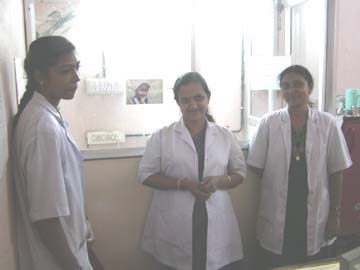
Implementation
The State Minister of Co-operation inaugurated the hospital on June 13 1999; four months after the committee had begun receiving membership fees. On the same day the hospital started an outpatient service during daytime hours. There were four doctors including an internist, two general practice doctors, and a female pediatrician. A staff of three nurses, one laboratory technician, and a pharmacist supported them. The limited lab facility included an ECG, an observation bed, and facilities for blood, urine, and fecal analysis. Because of the limited facilities at the beginning, many patients had to be sent to nearby hospitals or labs for treatment or tests.
In the first week association members needing to use the hospital demanded that the physician services be made available during the night as well as day. It is not easy for small hospitals to schedule doctors to work evening and night hours. But facilities also had to be arranged for patients who were admitted and might need care or monitoring throughout the night. The hospital acquired five beds and two new doctors. This made 24-hour scheduling easier. The existing building was slightly expanded by the addition of a five-bed ward.
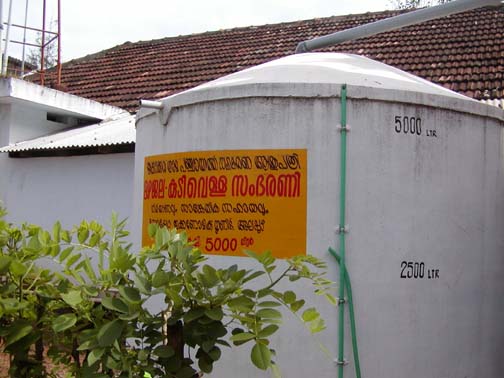
The Thrikkakara Cooperative Hospital rain harvesting tank.
Results: Stage-by-stage development
With the arrival of a dermatologist and ENT specialists who came two days a week to examine patients, the physician of the Vellore Christian Medical college who came forward to render voluntary service, a female gynecologist and a female pediatrician, the hospital came into a position to serve almost all urgent medical needs. Within 6 months the number of beds increased to 14. An ultra sound scanning system was provided by the doctor in charge on a commission basis. An x-ray system was made available in the third annual plan of the village panchayats, and started functioning by the first week of May 2000. In June 1999 nearly 100 patients visited the hospital every day. By October 2001 it had increased to 250 to 275.

The Thrikkakara Cooperative Hospital solar water heating unit. The main hospital building is in the background.
Popular Base
From the very beginning hospital supporters realized the need to widen the popular base of the institution. The motto of the governing body of the hospital was to mobilize public money and public support. In November 1999 power was entrusted to a 9-member democratically elected director board whose members would serve 5-year terms. All the elected members of the first board are pro-LDF who won their seats with 3/4 majorities of the total shareholders of the society. The former chief promoter was elected president. The director board members are:
| President | Mr. M. M. Abbas | a KSSP activist and people’s campaign supporter who also worked with cooperative movement and the Kerala library movement. He is a government employ in the Public Works Department. |
| Vice-president | Mr. M. C. Krishnan | A government employee working in water authority, and a KSSP activist |
| Secretary | Mr. C. R. Neelakandan Namboothiri | an engineer who is also a well-known columnist, social worker, and environmentalist |
| Member | Dr. Philip Thomas | former district medical officer |
| Member | Mr. K. N. Radhakrishnan | Block panchayat, member, area committee member of CPI (M) |
| Member | Mr. K. K. Kuttappan | a businessman |
| Member | Mr. K.K. Abdullah | former village panchayat member |
| Member | Adv. K.R.Jayachandran | a lawyer |
| Member | Ms. Sabitha Karim | CPI (M) active party member |
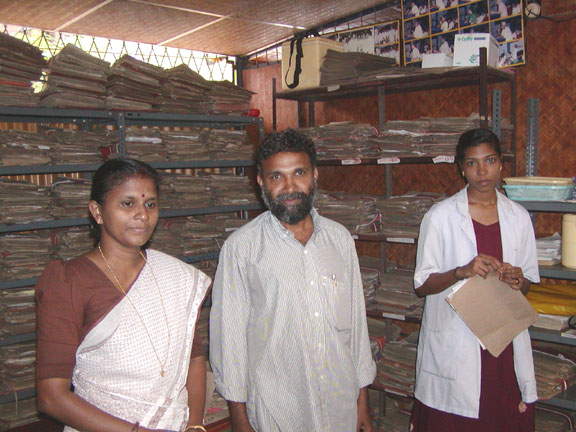
By October of 2001, the membership in the society had grown to 2,600. It includes laborers, merchants, farmers, students, head load workers, agricultural labourers, housewives, and retirees. One person can purchase up to 20 shares. In the beginning the membership had been limited to those living in Thrikkakara grama panchayat. By an amendment to the byelaws of the society it was expanded to all those living in Kanayanallore Taluk; a sub-district with a total population in 2001 of 790,344 and an area of 332.75 sq. km. Total investment in the hospital up to October 2001 was about 54 lakhs (Rs 5.4 million). By then 94% of the expenses of the hospital were covered by the income generated from the generally below market user fees. In November 2001 it reached break-even point. In 2002, the organisers of the hospital are planning to register a charitable trust as a Hospital Development Committee to collect donations from supporters among the public.
Socially Conscious Doctors and Low Medical Service Costs
This popular base was due to precision and transparency. What is important is neither the size of the hospital building nor the complex machinery and equipment, but on the contrary, to make available expert treatment in a way people can afford. That the organizers and people had this realization is the reason for the widening of the popular base.
The rates are lower here than in private hospitals- for consultation, check-up, medicines and all. It had been decided not to carry out unnecessary check-ups or dispense medicines for the sake of profit. All the employees agree to this stance.
Table 1: Comparison of Prices for Common Medical Services:
Thrikkakkara Cooperative Hospital and Typical Private Hospitals, in rupees
| Medical Service | Thrikkakkara Cooperative Hospital Charge | Typical Range at Private Hospitals |
| Monthly Consultation Charge1 | 25 | 50-100 and higher |
| Electrocardiogram | 40 | |
| Ultrasound Scanning | 300 | 450 and higher2 |
| One night bed charge3 | 10-15 | 25-100 |
Notes:
The members who own at least one share get a 10% reduction in the user fees that are already below typical charges in other sections of the health system. This is shown on table 1. No tax is charged on medicines. Thus a beneficiary gains 9% in the price of medicines.
By October 2001, 21 doctors were working at Thrikkakkara. Eight are full time doctors on staff. Others work part time or on a commission basis. Mostly socially committed doctors are working here. They are highly qualified and service minded. They are getting lower salaries than their counterparts in private hospitals. Some doctors do free service here. The hospital is trying to give best available medical service to people at the cheapest possible rates and also trying to create a healthy atmosphere.
Hospital Society president Mr. M. M. Abbas and Secretary C. R. Neelakandan Nambuthiri illustrate the community spirit that runs strong in Thrikkakkara Cooperative Hospital. Both devote nearly all their leisure time for hospital work at no pay. Many local people have expressed their admiration for the roles these two men have played.
Public Health and Preventive Medicine
Project activists realize that health improvements are not possible only through hospitals and treatments. A large number of people may not able to make use of the facility no matter how inexpensive it may be. Furthermore, it is more cost-effective and promoting of human welfare to prevent disease as much as possible in the first place.
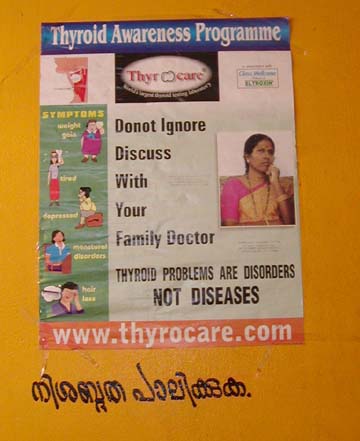
To this end, low cost rural family health and children’s disease clinics were opened in two remote of the panchayat, first in Tengod and then in Chittethukara. These places are far from the headquarters of Thrikkakkara village panchayat, but are densely populated with Muslim and former untouchable populations. Free medical check-ups are offered in Thrikkakkara Co-operative Hospital every two months. Together with this, health and environmental education programmes are also conducted. The need for safe drinking water, health problems caused by fast food and fried food, food contamination, and the need and techniques for the proper disposal of garbage are discussed in these classes. About 25 specialists took part in over 10 sections in all the medical check-up camps. On an average 800 people came for check-ups in each camp. ECGs and lab tests are carried out free of charge for those recommended by the specialists during these special check-up camps. Utilizing various state government programs and services the staff make available free of charge preventive injections for children, and Oral Rehydration Solution (ORT or oral rehydration therapy) that is used to lessen the chances of infant death from dehydration that often accompanies high fevers or diarrhea. Free treatment for TB is also available here.
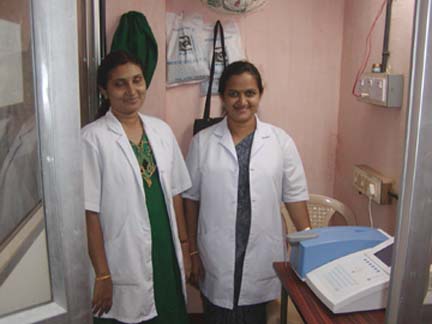
The director board manages the day-to-day affairs of the society. The decisions of the director board must get ratification at the annual general body meeting of all members of the society. The board also works with a number of small-scale organizations outside Thrikkakkara on various social and health related activities. These organizations include Uravu ("source of friendship or affection") that works among the adivasis (tribal peoples) in Wayanad district, Haritha Maithry ("green friends") that works on environmental protection and for the promotion of vegetarianism, Alter Media that publishes progressive books and books dealing with environmental protection and Socio-Economic unit, an Alappuzha district N.G.O with Dutch connection. Socio-Economic unit helped install a rainwater tank and a solar light in the hospital.
Follow Up: Future Activities
The society is trying to mobilize money to buy additional land and to complete 40 more rooms and a 60-bed ward by November 2002. But the policies of the new UDF ministry are producing obstacles. The new directives given by the state government prohibit local governments from giving financial aid to the co-operative sector. So the hospital society is looking for other sources for the financial help. The District Co-operative bank gave a loan of Rs. 2.2 million (22 Lakhs) and made a grant of Rs. 70,000 to the hospital. The longer-term goal of the hospital society is to expand the 60-bed hospital to 200 beds by 2008. The new main building has not yet been constructed. The hospital is still functioning in the building rented from the village panchayat. The temporary tin sheet buildings are still in use. When additional advanced medical facilities are available, public demand may require 200 or more beds.
The society has also decided not to go back from the aim of providing low cost expert treatment to the weaker sections of the society, no matter how large and sophisticated the hospital becomes.
Conclusion: Lessons from Thrikkakara
The successes of the Thrikkakara Cooperative Hospital suggest that problems must be raised in public forums like the grama sabhas and that people must work collectively to find solutions. The proposals for solution must be widely discussed in village assemblies and must obtain the people’s approval.
Through the inspiration and the mechanisms of the people’s campaign in Thrikkakara it has been possible to mobilize extensive capital and to recruit socially conscious medical practitioners to make possible a greatly expanded health care and disease prevention institution with little government funding and without charging private sector fees.
Monitoring and Evaluation:
There are no records to indicate whether overall health of the local population has improved. The presence of the hospital led to 15 public health activities from 1999 to 2001. These included free medical check up camps, and health and environmental education program.
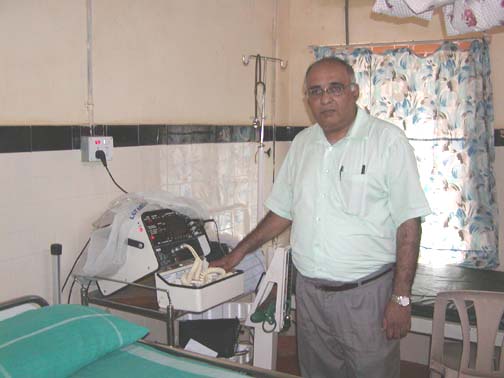
Spread to Other Localities
On noting the success of the Thrikkakara co-operative hospital Alangad block panchayat in Ernakulam district registered a co-operative society to start a co-operative hospital. Altogether Kerala has 150 cooperative hospitals, but few have been brought to such high levels of service in so short a time. The Thrikkakara Cooperative Hospital success story is a success story of the People’s Campaign.